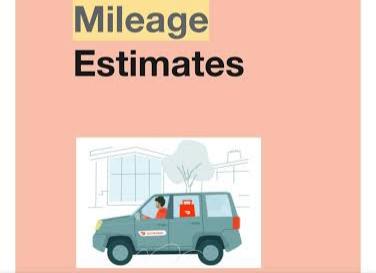
As a DoorDash driver, tracking your miles isn’t just a good habit, it’s a game-changer for your earnings and tax savings. Every mile you drive while delivering food can add up to significant deductions come tax season. In this guide, we’ll walk you through everything you need to know about tracking your DoorDash miles, from the best apps to use to how to claim your mileage on taxes. Let’s dive in!
Why Tracking Miles is Crucial for DoorDash Drivers
Tracking your miles isn’t just about keeping records—it’s about saving money. Here’s why it matters:
- Tax Deductions: The IRS allows you to deduct business-related mileage from your taxable income, which can save you hundreds (or even thousands) of dollars.
- Accurate Earnings: Knowing how many miles you drive helps you calculate your true earnings after expenses like gas and vehicle maintenance.
- Reimbursement: While DoorDash doesn’t reimburse drivers for mileage, having accurate records ensures you’re prepared for tax season.
What Miles Can You Track as a DoorDash Driver?
If you’re wondering which miles count as “business miles,” here’s the breakdown:
- Miles You Can Track:
- Driving to the restaurant after accepting an order.
- Delivering food from the restaurant to the customer.
- Driving to a new delivery zone after completing an order.
- Miles You Can’t Track:
- Personal errands (e.g., grocery shopping, medical appointments).
- Commuting from your home to your first delivery location (this is considered personal use).
How DoorDash Tracks Your Miles
The Dasher app uses GPS to calculate the miles you drive for deliveries. Here’s how it works:
- Your Current Location: The app detects your location when you accept an offer.
- Restaurant Location: It calculates the distance from your location to the restaurant.
- Customer Location: It measures the distance from the restaurant to the customer’s address.
- Total Miles: The app adds up all the miles you drive during your shift, including trips between deliveries.
Important Note: The app doesn’t account for extra miles caused by incorrect addresses or detours. That’s why it’s crucial to track your miles independently.
3 Best Ways to Track Your DoorDash Mileage
There are several methods to track your miles, each with its own pros and cons. Choose the one that works best for you:
1. Use a Mileage Tracking App
Mileage tracking apps are the easiest and most accurate way to track your miles. Here are some top options:
- Everlance (Recommended by DoorDash): Tracks miles automatically and categorizes trips as business or personal.
- Stride: Offers free mileage tracking and helps estimate your tax deductions.
- Hurdlr: Tracks miles, expenses, and even calculates your net earnings in real time.
- MileIQ: Automatically logs every trip and lets you classify them with a simple swipe.
Pro Tip: Most of these apps offer free versions, but upgrading to a paid plan unlocks features like expense tracking and tax reports.
2. Create a Mileage Log Book
If you prefer a manual approach, a mileage logbook can work just as well. Here’s how to set it up:
- Columns to Include:
- Date
- Starting Odometer Reading
- Ending Odometer Reading
- Total Miles Driven
- Purpose of Trip (e.g., “Delivery to Customer”)
- Bonus: Keep gas receipts and maintenance records to support your log.
3. Review Your DoorDash Delivery History
If you forget to track your miles, you can still estimate them using your Dasher app:
- Open the app and go to your delivery history.
- Add up the miles for each delivery you completed.
- Use this total as your mileage for the day.
What to Do If You Forget to Track Your Miles
Forgot to log your miles? Don’t panic. Here’s how to recreate your mileage log:
- Check Your Dasher App: Review your delivery history to see which days you worked.
- Estimate Miles: Use the app’s delivery details to calculate the miles you drove.
- Gather Supporting Documents: Gas receipts, maintenance records, and even Google Maps history can help verify your mileage.
How to Claim Mileage Deductions on Your Taxes
To claim your mileage on taxes, you’ll need detailed records that include:
- Dates of Trips
- Miles Driven
- Purpose of Each Trip (e.g., “Delivery for DoorDash”)
- Locations (e.g., “From Restaurant A to Customer B”)
IRS Mileage Rate: For 2023, the standard mileage rate is 65.5 cents per mile. Multiply this rate by your total business miles to calculate your deduction.
FAQs About DoorDash Mileage Tracking
1. Do I need to track miles for DoorDash?
Yes! Tracking your miles ensures you can claim tax deductions and accurately calculate your earnings.
2. Can I deduct mileage on my taxes?
Absolutely. The IRS allows DoorDash drivers to deduct business-related mileage from their taxable income.
3. What’s the best free app for tracking miles?
Stride and Everlance both offer free versions that are perfect for DoorDash drivers.
4. Does DoorDash reimburse drivers for mileage?
No, DoorDash doesn’t reimburse drivers for mileage, but tracking your miles can save you money on taxes.
Final Thoughts
Tracking your miles as a DoorDash driver is one of the simplest ways to boost your earnings and save on taxes. Whether you use a mileage tracking app, a logbook, or your Dasher app history, the key is to stay consistent. Start tracking your miles today—it’s a small step that can lead to big savings!

Leave a Reply